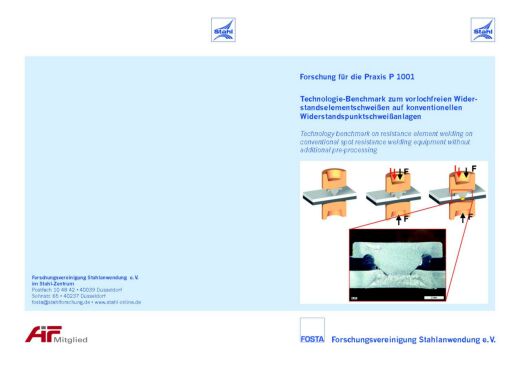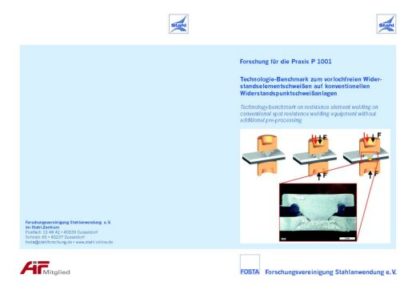Description
P 1001 – Technology benchmark on resistance element welding on conventional spot resistance welding equipment without additional preprocessing
The affordable implementation of steel intensive lightweight constructions in automotive engineering depends on the availability of suitable joining methods for such material combinations. The systematic development of combined joining methods is necessary to overcome the metallurgical and thermal incompatibility of steel/aluminum or steel/fiberreinforced plastic combinations. Regarding this joining task, conventional thermal joining procedures such as resistance spot welding (RSW) reach their process limits, due to different physical material properties. The combination of joining methods is a promising approach. The resistance element welding (REW) meets the requirements and is under development and qualification for automotive mass production. Here, an additional element is inserted in the aluminum or fiber-reinforced plastic cover sheet and finally joined with the lowersteel sheet via conventional resistance spot welding.
By now, the REW process is based on pre-holing of the cover sheet or a pre-stamping of the element into the cover sheet material and therefore requires an additional process step in both versions. The high manufacturing complexity associated with an additional process step is an economic disadvantage. The development of the self-pierce resistance element welding process (SPREW) without pre-processing using conventional RSW equipment is therefore an approaching effort. Within this project a technology benchmark regarding the feasibility of SPREW without preprocessing was carried out. Due to the complexity of the joining process, there are numerous constraints (e.g. material strength, rivet geometry), system-related limitations (e.g. low electrode force) as well as process-related characteristics (e.g. parameter optimization).
It was found that SPREW allows the use of conventional spot welding equipment and is a particularly costeffective joining method. Therefore the SPREW is generally feasible. Both classic material combinations suitable for spot welding (e.g. steel-steel) and mixedmaterial composites (e.g. aluminium-steel or CFRP-steel) can be manufactured on the same machines, what could be proved to be a big advantage in comparison to other processes in terms of the increasing diversity of material combinations.
The research project was carried out at Laboratorium für Werkstoff- und Fügetechnik, Universität Paderborn. FOSTA has accompanied the research work and has organized and financed the project.
Only available in german language.
Authors:
G. Meschut, O. Hahn, V. Janzen
Published in:
2015




